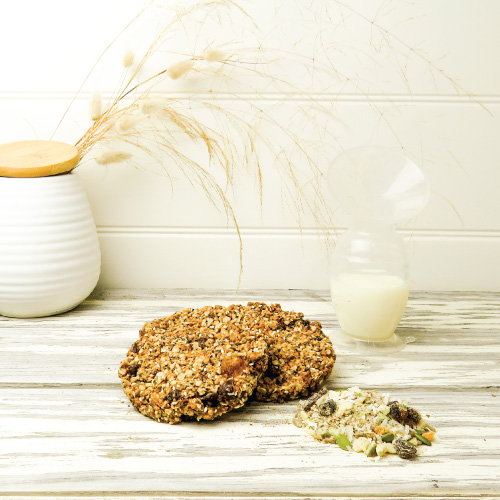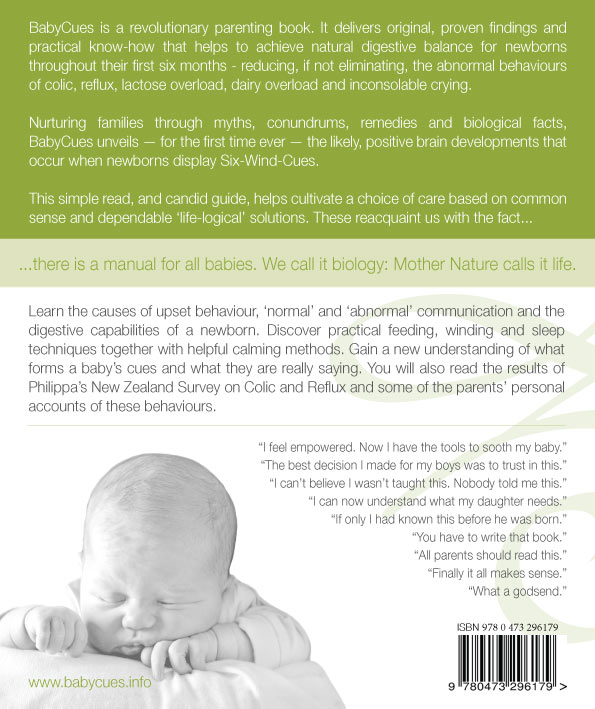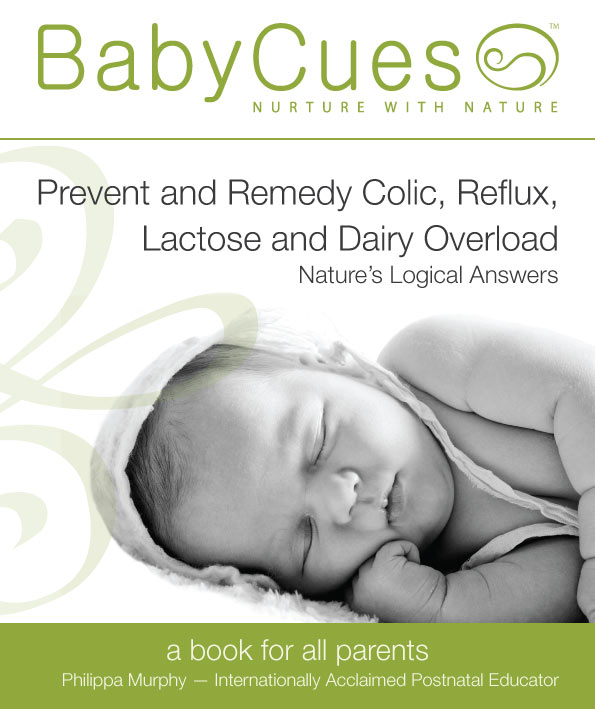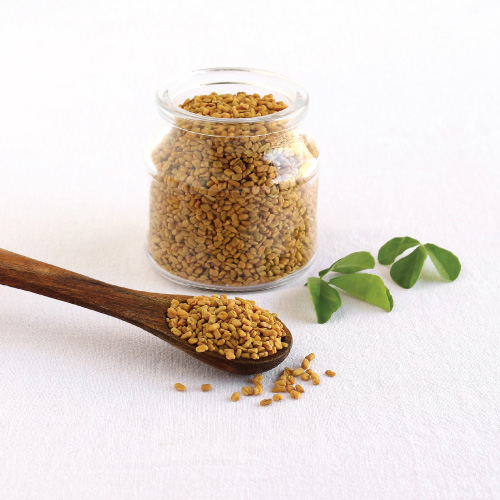Are lactation cookies & teas healthy for baby?

Lactation cookies and tea seem to be popping up everywhere these days, and while some of them may be helpful for increasing supply, many of them have ingredients within them that can have a negative effect on a baby’s digestive system, and therefore their comfortability and communication.
As a breastfeeding Mum there is nothing more worrying than wondering if you have enough milk supply for your baby. I find many Mum’s these days are using lactation cookies and teas just in case there is an issue, or when supply has shown itself to be low – either through the baby’s weight gain, or expressing with an electric pump.
Get the help you need
Hailed as a game changer, life-saver and a must read from parents and postnatal professionals, this self-help book truly has the answers that NATURALLY prevent and heal the symptoms of colic, reflux, silent reflux, the witching hour and lactose and dairy overload - aka Digestive Overload, the true cause of these symptoms.


- nurture your child's digestive system
- Burp your baby to comfort
- Understand their Six-Wind-Cues
- Calm baby with techniques that work


LEARN HOW TO
- nurture your child's digestive system
- Burp your baby to comfort
- Understand their Six-Wind-Cues
- Calm baby with techniques that work
Generally, when lactation cookies and teas are suggested by a professional or family member, and advertised by the producer, all focus is on the potential to increase milk production for baby. Thus maintaining the healthiest food possible for them, which is of course wonderful. However, what is often overlooked and certainly not talked about a lot within breastfeeding education, is the effect that these products then have on the baby, outside the creation of more milk. What might seem like a ‘healthy’ option for supply can unfortunately have grave effects on a baby’s digestive system. Leading to symptoms that can interfere with their physical and mental development because baby gets less sleep and can cry more from the discomfort they feel in the digestive tract from the ingredients. But before we delve into what ingredients have a negative impact on our babies and infants, and look at the symptoms they can cause, let’s look at the basics.
How do lactation cookies and teas work?
These products contain Galactagogues, which are basically herbs and foods that are said to increase milk production for lactating mothers. Galactagogues stimulate milk supply or oxytocin, which then aids breast milk ejection.1 These stimulates are not always natural, you can also get synthetic galactagogues, such as domperidone and metoclopramide, but we will only be focusing on the herbs and food galactagogues in this article.

Common Natural Galactagogues
There are many choices when it comes to these and some are more widely known and used than others. This may not be a full list…
Almonds, anise, asparagus, borage, caraway, chaste tree fruit, chicken soup, cilantro, coconut, coriander, cumin, dandelion, dill, fennel, fenugreek, garlic, ginger, hops, lettuce, marshmallow root, millet, mushrooms, nettle, oats, papaya, pumpkin, red clover, raspberry leaf tea, rice, sage, seaweed soup, sesame seeds, sunflower seeds, thistles, and vervain. 1-4
Ingredients that can cause digestive upset
Before we go through the list to ideally avoid, I’d like to highlight the fact that when we talk about reactive food for newborns and infants, we must remember that their digestive system is still under development. That’s not to say that they are born with an immature digestive system, for they are not. They are born with the digestive system they require for their age and stage, and it is up to us to learn how to nurture alongside this. It’s more to say, that what we think may be a small amount of a food can be a lot for their digestive system to process. It’s also fair to say that some are born more sensitive in the digestive tract than others. So what might not affect some, will have a diabolical effect on another. The same applies with amounts. A baby or infant may be okay with the ingredient if you are having one cookie or tea a day, but when you have that second one, it causes them distress. So the question then comes, how do you monitor that? How can you tell if it’s the cookie or tea affecting them, or something else?
A general rule for defining whether any food is upsetting your newborn or infant (except if there is a true allergic reaction) is to look back at what you ate before their last two feeds. So if you have your breastfeeding tea say at 6am in the morning, and then feed bubs at 6.30am. It won’t be after the 6.30am feed that they will communicate any possible discomfort from an ingredient, it will be after their next feed at around 10.30am. This is of course when a baby is being feed in accordance their natural digestive function, as per Bio-logical Care recommendations that suggest to feed every 3 ½ hour to four hours to foster healthy digestive processes. So that said, let’s first look at a few of the ingredients in lactation cookies that can create upset for baby.
Oats
There are many advantageous reasons why oats are a good choice of food for adults. But this is one of the main contenders for digestive upset for babies and is often one of the main ingredients in lactation cookies. Oats are a carbohydrate and because carbohydrates turn to monosaccharides (sugar) they can cause gas. For a baby, one of the worst causes for discomfort is gas in the bowel and given our babies are born to instinctively react to tension in the digestive tract, this can have some children holding onto their stools, contributing to possible constipation. This tension can also lead to higher levels of gas moving through the digestive tract from swallowed air during feeding, because all focus goes on the area of highest tension/pain, which means the release of air via burping slows down. A distended stomach can also result in frothy bowel motions and if constipated, green bowel motions.
There are recommendations about how much carbohydrates are healthy for our young. According to an article on Today.com5 the guidelines for a child’s carbohydrate consumption are:
- From one to six-months, a child should have 60 grams of carbs
- From seven to 12-months, 95 grams a day
- One to three-years-old, 130 grams a day.
This means that breastfeeding mothers would ideally be aware of roughly how many carbohydrates they are consuming in a day as an overload can contribute to upset behaviour and Digestive Overload symptoms – the cause of colic and reflux. So with this known, what are the guidelines for sugar intake for a baby and infant.
Sugar
It is advised that the daily intake of sugar for a six month old is, ‘no more than 5% energy – so less than two teaspoons a day. Less than 3% energy is suggested for dental cavities.’6 These amounts are of course included within the amounts for carbohydrate consumption.
Many of the cookies available claim they are healthier because they use coconut sugar, but there is no difference between this and regular sugar when it comes to the amount of sugar intake. Both are 4grams per teaspoon.
One popular selling brand of lactation cookies that sell in New Zealand and Australia completely market themselves as being a healthy option. But when we look at the amount of sugar per cookie, this is far from the case, with each reported to have 30grams of sugar. This particular brand also uses soy in their cookies, which research has shown is not healthy for our young.
Soy
There are many research papers on how soy is healthy, but there are also many papers saying the opposite. These peer reviewed papers site three primary problems with western soy, which is generally fermented differently than Asian soy. These three concerns are Phytic Acid, Trypsin Inhibiotors and Phytoestrogens (hormonal effects). I have written more about this on my blog ‘Soy Formula – healthy or harmful?’
Dairy
It is a bio-logical fact that when we are first born we all struggle to breakdown the dairy proteins casein and whey. Therefore it can be highly beneficial for the child’s digestive function and comfortability levels to reduce, or fully eliminate dairy from the breastfeeding diet (if one does this, it is important to then increase other proteins like eggs, fish and meat). Needless to say, some of our cookies are made with butter, and if you like the taste of those cookies, you may end up consuming quite a bit of butter in comparison to what your baby’s developing digestive system can cope with.

Coconut
Often coconut oil is used as a replacement to butter in lactation cookies, and while this will be okay for some children, it is also fair to say that coconut can lead to digestive problems like constipation, gas and bloating for sensitive individuals. So it is certainly an ingredient to be wary off, especially because there are more and more coconut products being offered to breastfeeding mothers these days for replacement of dairy.
Chia seeds
These are one of the talked about health foods of our times really. However when it comes to the developing digestive system, one has to question if they are healthy for breastfeeding mothers. Chai seeds are high in fibre, and while some fibre is required, too much may cause digestive issues for adults, let alone newborns and infants. These symptoms are abdominal pain, constipation, diarrhoea, bloating and gas.7 Also, most health authorities advise pregnant and breastfeeding women to stay on the safe side and avoid the use of chia seeds until more research has been done. Given that they may bring upset to baby’s digestive system, I tend to agree.
Flax meal
Flax meal is another food that has a lot of healthy researched reasons to eat it, but the negative side effects of this food are said to be diarrhoea, intestinal obstructions, bloating, stomach ache, constipation and gas – you guessed it. Not good for our young.
Brewers yeast
A lot of lactation cookies have brewers yeast in them as it’s become another well heard of potential booster of milk supply. However, the most common side effects of this ingredients is gas, bloating and migraine-like headaches.
Fenugreek
This is such a well-known galactagogic, but what is not widely known about fenugreek, and I only became aware of myself recently, is that it ‘may cause nausea and vomiting in mother and diarrhoea in baby.’1 The research paper that this is within doesn’t include the nausea and vomiting for the baby but I do wonder, given a mother’s diet is passed through the blood into her milk supply, whether these symptoms are also possible for baby too and whether some of the ‘reflux’ seen may be attributed to Fenugreek when taken? The same research paper also writes that fenugreek ‘may increase asthma symptoms, or lower glucose levels in mother.’

Symptoms caused by these ingredients
While it is fair to say that some newborns and infants are more sensitive than others when it comes to their reaction of food in a mother's breastfeeding diet, it is also fair to say that the majority of newborns will experience one, if not all of the symptoms below from the foods listed above:
- bloating
- gas
- pedalling legs
- arching backwards
- deposits that look like sesame seeds or cottage cheese in their stool
- green bowel motions
- diarrhoea or constipation
- frothy stools
- mucous in stools
- unsettled sleep
- bopping on and off the breast when feeding as they react to the food in the digestive tract
- crying or screaming
- rooting to suck a lot as they search for their innate comfort in response to the pain
- not wanting to be put down or lay flat
My recommendations
At the end of the day, I can’t honestly say that I have ever seen a lactation cookie increase supply. What I have seen though is positive differences in bowel motions and behaviours for the child when lactation cookies have been removed from the breastfeeding diet.
Given the amount of potentially adverse ingredients in lactation cookies, I don’t actually recommend them to any of my breastfeeding mothers. Personally I prefer to err on the side of caution and choose either a single galactgogues from the list below, or use a combination of them within a capsule or a breastfeeding tea.
I also, of course, get mothers to pump, stimulating the breast to increase supply. International Lactation Consultant, Joegensen-Perry states this about lactation cookies, ‘It is magical thinking if you believe eating a cookie is going to make milk appear in your body. Physiologically that is not what happens. Milk supply is really dependent on the level of stimulation the breast receives. The amount of drainage that occurs during a feeding, and pumping session and the frequency with which those happen.’
When it comes to my recommendations below, the amount needed for each of these galactagogues will vary from mother to mother and how they respond to the galactagogue. Also one must always be vigilant about the possibility of an allergic reaction to these. My recommendations are:
- Raspberry leaf tea
- Fennel – although it may cause dermatitis for some1
- Nettle – rarely can cause stomach upset so if you choose this and baby gets unsettled, stop taking.
- Anise
- Marshmallow root
- Garlic
If I was to suggest a breastfeeding tea that you can buy, it would be the New Zealand made Artemis Breastfeeding Tea.
I’d like to finish off by honouring the Mum that this blog has been inspired by. After reading my breastfeeding diet list on what to avoid, she discovered that the widely popular milk tea she was having five cups a day off, used a herb that produced gas and bloating. On stopping the tea, her son calmed. His gas was significantly reduced and his stomach was no longer distended. His skin also cleared up very quickly. She wrote to me saying, “I am so upset by this that I could sue that company with a good heart, and I am not the type of person to ever do something of the sort, however, we have both suffered so much discomfort.” I read it and on the spot promised I would write this blog for her, and all breastfeeding mothers.
Please note: If you are concerned about your breast milk supply please feel free to book a consultation with me or talk to another trained health practitioner about it. Also note that FDA does not regulate herbal products in the same manner. The FDA regulates herbals under food manufacturing regulations. Herbal products are required to be free of contaminants. Herbal labels may not make unfounded health and medical claims.1
- Nice, F. J. (19 May 2011). "Common Herbs and Foods Used as Galactogogues". ICAN: Infant, Child, & Adolescent Nutrition. 3 (3): 129–132. doi:10.1177/1941406411406118.
- Marasco L. Inside track: increasing your milk supply with galactogogues. J Hum Lact. 2008;24:455-456.2.
- Humphrey S. Herbal therapies during lactation. In: Hale T, Hartmann P, eds. Textbook of Human Lactation. Amarillo, TX: Hale; 2007:629-654.3.
- Humphrey S. The Nursing Mother’s Herbal. Minneapolis MN: Fairview Press; 2003.
- Many packaged baby foods exceed limits of these ingredients
- FIZZ – Fighting Sugar in Soft Drinks
- Diet and Health: Implications for Reducing Chronic Disease Risk. National Research Council (US) Committee on Diet and Health. Washington (DC): National Academies Press (US); 1989.





